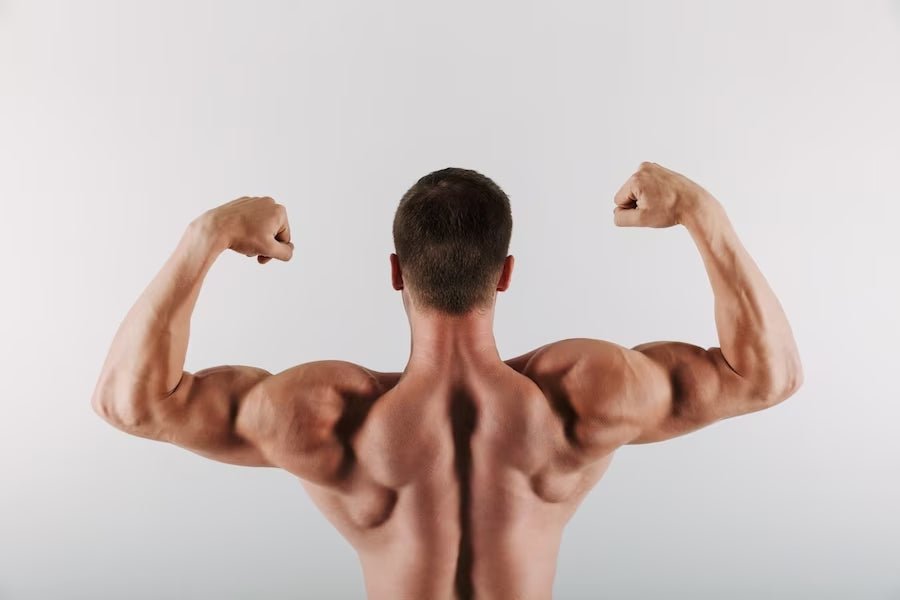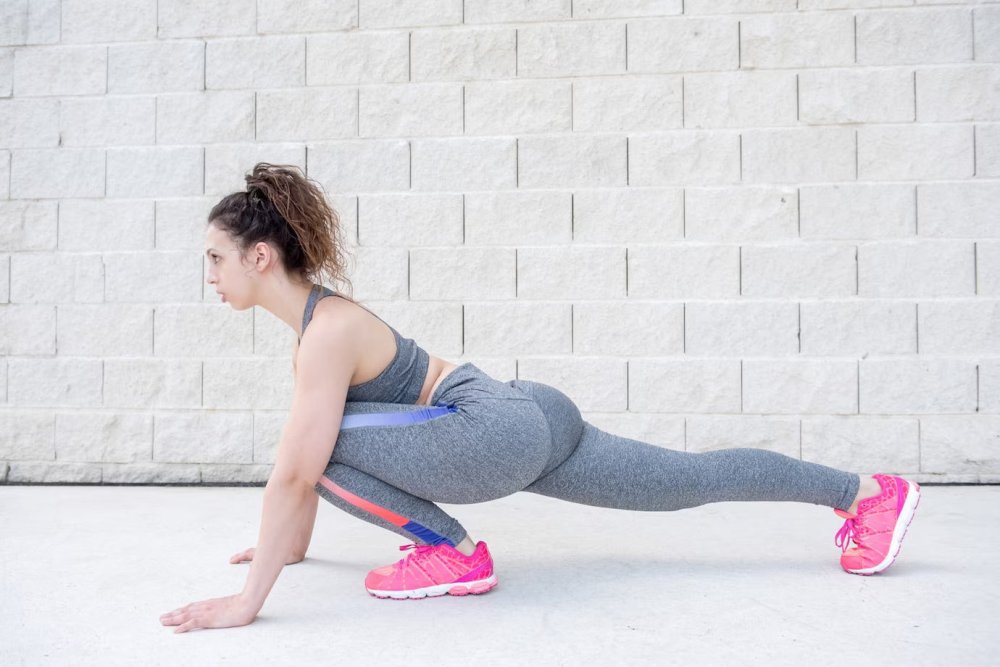Welcome to the world of polymetric workouts.
If you're a workout lover, this is something that might just change your life.
Polymetrics are exercises that combine several movements from different disciplines into one, making for an incredibly invigorating and challenging exercise routine.
Whether you want to increase strength, flexibility, or balance - these exercises can help you reach those goals with increased intensity and efficiency.
Get ready to take your workouts up a notch with these effective polymetric exercises:
Best Polymetric Exercises For Speed
Add these polymetric workouts to your routine, and sooner you’ll have significant gains:
1. Box Jump

Box jump has to be on your list of best at-home polymetric exercises as it targets the lower body muscles, including the quadriceps, hamstrings, glutes, and calves.
Thanks to this ingenious movement, you can expect to improve explosive power, speed, and coordination.
Step-Wise Guide:
- Find a strong box or base that is the right size. Start with a lower height and work your way up as you get better.
- Stand with your feet shoulder-width apart and your back to the box.
- For speed, bend your legs a little and swing your arms backward.
- Jump up quickly, driving your arms forward and putting your hips, knees, and feet as far apart as you can.
- Aim to fall so that both feet are on top of the box. This will keep you stable.
- Bend your knees and hips as you fall to take the impact.
- Use the right method and control to step or jump back down to the starting position.
- Repeat the movement for as many times as you want.
Common Mistakes
- Attempting a box that is too high, leading to a failed or unsafe landing.
- Using a box that is too unstable or slippery.
- Neglecting proper landing mechanics, such as landing with straight legs or allowing your knees to collapse inward.
2. Clapping Push-Up

If you are eager to enhance upper body explosive strength and power, try this polymetric movement. It engages the chest, shoulders, triceps, and core muscles.
Step-Wise Guide:
- Start in a normal push-up position, with your hands slightly wider than shoulder-width apart and your toes on the ground.
- Use your core muscles to ensure your body is straight from your head to your feet.
- Bend your arms and keep them close to your sides as you lower your body toward the ground.
- Push off the ground quickly and hard enough to get your hands off the ground.
- Quickly clap your hands together in front of your chest while you're in the air.
- Extend your arms so that you land with your hands back on the ground, and bend your elbows just a little bit to take the pressure.
- Focus on moving quickly and explosively as you do it again and again.
Common Mistakes
- Allowing your lower back to sag or your hips to rise too high.
- Failing to engage the core muscles, leading to a loss of stability.
- Attempting the exercise before having mastered the standard push-up form.
3. Lateral Jumps

Would you love to target the muscles of the legs, including quadriceps, hamstrings, glutes, and calves? If so, lateral jump has to be your best bet when it comes to no-equipment polymetric exercises.
This exercise increases lower body power, agility, and lateral movement ability.
Step-Wise Guide:
- Stand with your feet together and your arms at your sides.
- You should slightly bend your knees and get ready to jump to the side.
- Jump to the side quickly and hard, pushing off with both feet.
- Keep your arms straight to the ground as you swing them to gain speed.
- Try to land softly on the balls of your feet, with your knees slightly bent and your weight spread out evenly.
- Keep your balance and get ready to jump to the other side right away.
- Repeat the move, switching sides every time you jump.
- Keep a steady beat and stay in charge during the whole workout.
Common Mistakes
- Not fully extending the hips, knees, and ankles during the jump.
- Allowing the knees to collapse inward upon landing.
- Using excessive upper body movement or arm swing.
Best Polymetric Workouts At Home
Unsure of how to increase your speed and power at home? Let’s take a look at these best polymetric exercises that are obvious to work:
4. Jump Squat

It is one of the best polymetric exercises for runners and sprinters that develop explosive lower-body power and strength. The workout engages multiple muscle groups, including quadriceps, hamstrings, glutes, and calves.
Step-Wise Guide:
- Stand with your feet about the width of your shoulders apart and your toes pointing out slightly.
- Focus on your core, keep your chest up, and keep your back straight.
- As if you were sitting in a chair, bend your knees and push your hips back to get into a squat pose. Keep your weight on your feet.
- Keep going down until your legs are parallel to the ground or you can't get any lower.
- Jump as high as you can with your hips, knees, and feet as far apart as you can.
- Swing your arms up as you jump to get more speed.
- Stretch your whole body out and reach for the sky.
- When you land, bend your knees and hips to get back into a squat position.
- Keep your balance and control before making a move again right away.
Common Mistakes
- Allowing your knees to cave inward during the squat.
- Not maintaining proper form, such as rounding your back or leaning too far forward.
- Neglecting to land softly, which can lead to joint strain.
5. Rotational Med Ball Throw

Rotational med ball throw is a great polymetric power exercise as it enhances sports-specific movements involving rotation, such as throwing or swinging.
It also develops rotational power and strength in the core, shoulders, and back.
Related Blog:
Best Slam Ball Exercises
Step-Wise Guide:
- Stand with your feet shoulder-width apart, holding a medicine ball in front of your chest with both hands.
- Rotate your torso to one side while keeping your lower body stable.
- Quickly rotate back in the opposite direction, driving the medicine ball forward and away from your body.
- Release the ball at the end of the movement, ensuring a powerful throw.
- Catch the ball if necessary or retrieve it and repeat the exercise.
- Maintain control and stability throughout the movement, engaging your core muscles.
Common Mistakes
- Failing to engage the core muscles during the rotation.
- Using excessive arm movement instead of generating power from the hips and core.
- Choosing a medicine ball that is too heavy, leading to a loss of control or poor form.
6. Split Squats

Split squats target the quadriceps, hamstrings, glutes, and calf muscles, improving lower body strength and stability. Moreover, they help correcting muscle imbalances between the legs.
Step-Wise Guide:
- Start by standing with one foot positioned forward and the other backward in a split stance.
- Keep your upper body upright, engage your core, and lean slightly forward.
- Lower your body by bending both knees simultaneously, aiming for a 90-degree angle in both legs. The front knee should be directly above your ankle, and the back knee should be hovering just above the ground.
- Push through your front heel to return to the starting position, extending both legs.
- Repeat the movement for the desired number of repetitions and then switch legs, alternating between the forward and backward positions.
Common Mistakes
- Allowing the front knee to extend past the toes, which can strain the knee joint.
- Leaning too far forward or backward, compromising proper form.
- Neglecting to keep the back knee close to the ground throughout the movement.
Over To You
Now that you are armed with a better understanding about the best polymetric exercises, let's get to work. Have fun stretching and flexing your fingers to foster agility and callous-free paws.
Don't forget the importance of warming up your muscles before getting into any type of finger exercise.
Keep checking Gripzilla blogs for latest updates in 'do it yourself' ergonomic techniques and tips so you can keep rocking on stage without risking any physical or psychological damage.



